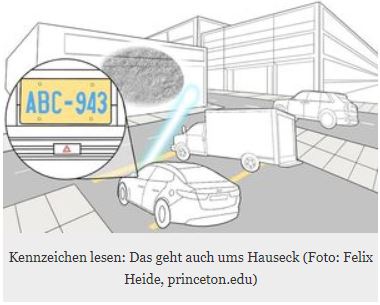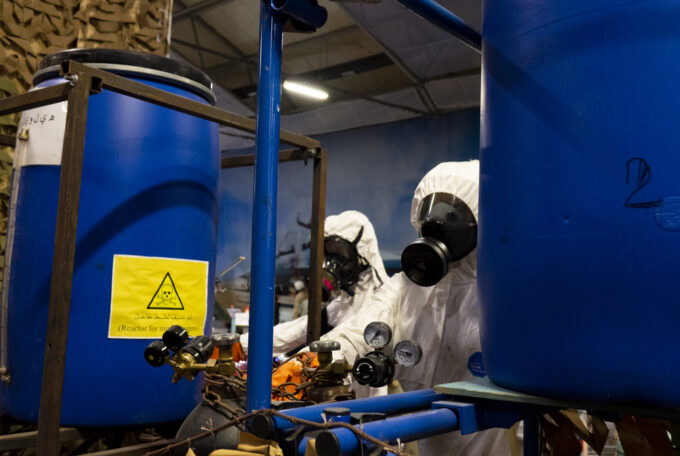Camera sees around the corner
A novel system makes it possible to see around corners with a standard camera sensor. This offers many application options.

Researchers at Stanford https://stanford.edu and Rice University https://rice.edu have developed a novel system that allows a camera to see around corners thanks to lasers and deep learning. "Compared to other approaches, our system for imaging without line of sight delivers uniquely high resolutions and imaging speeds," says team leader Christopher Metzler. For example, unlike other approaches, the new solution detects smaller details such as license plates.
Ingenious laser pattern
The system makes it possible to see around corners with a standard camera sensor. To do this, it uses a powerful laser source to illuminate a wall in the background so that the light from it falls on the object hidden behind the corner, such as a car. The light is then reflected from the object to another part of the wall, where an interference pattern, known as a speckle pattern, is created. A neural network trained through deep learning then reconstructs an image of the object hidden around the corner from this pattern. In tests, the researchers have thus recognized one-centimeter letters and numbers.
"The biggest problem with our technology is that it currently has a very narrow field of view, just a few inches," Metzler told The Register. That means the system can pick out small details, such as license plates or even nameplates. However, it would not be able to see an entire car, for example. However, the new system could be combined with other technologies for seeing around corners. Previous approaches have been more suitable for images of large areas with low resolution - for example, a car whose license plate cannot be deciphered.
Broad application potential
Interest in around-the-corner vision technologies is high. "This has many important applications in medical imaging, navigation, robotics, and defense," explains Felix Heide, a computer science professor at Princeton University https://princeton.edu and co-author of a paper published in "Optica" on the new approach. The new system could represent an important step toward the practical use of such technologies by enabling the recognition of details instead of just rough overviews.
Source: pressetext.redaktion









